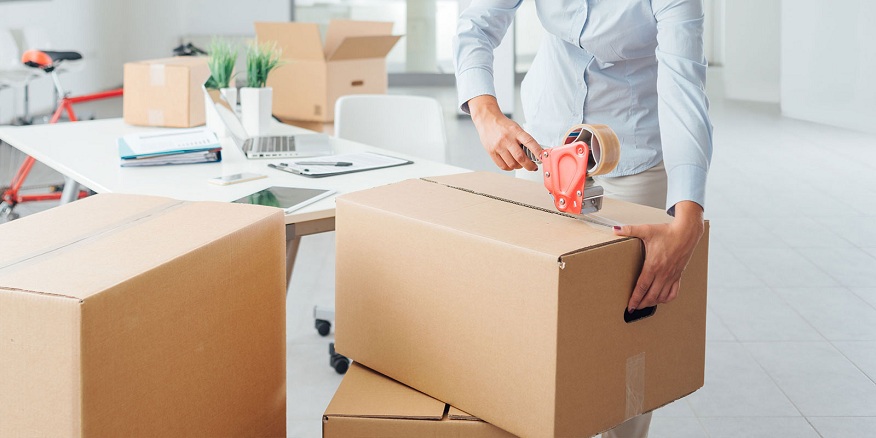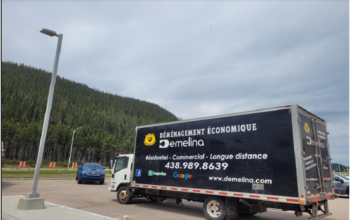Commercial moving projects can be complex and pose various risks to both the movers and the property being moved. Ensuring the safety of all individuals involved and mitigating any potential risks should be a top priority for any commercial moving project.
When considering a relocation venture, businesses often seek reliable partners to ensure a seamless transition.
Triple 7 Movers stand out as cost-efficient commercial movers in various locations in Las Vegas, NV, offering comprehensive solutions to safeguard your assets during the moving process. These locations include:
Cost-efficient commercial movers in Las Vegas, NV
Top-tier commercial movers in Henderson, NV
Seamless commercial moving services in Reno, NV
Hassle-free commercial moving services in Arden, NV
Moving on, this blog post will explore strategies to effectively mitigate risks and ensure safety in commercial moving projects.
Understanding the Risks Associated with Commercial Moving Projects
Before implementing any safety measures, it is crucial to have a clear understanding of the risks associated with commercial moving projects. These risks can include personal injuries, damage to property or assets, financial losses, and reputational damage. By identifying and understanding these risks, you can develop effective strategies to mitigate them.
Evaluating Safety Procedures and Protocols
To ensure safety in commercial moving projects, it is necessary to evaluate and improve existing safety procedures and protocols. This involves various steps, including:
Identifying Potential Safety Hazards
The first step in evaluating safety procedures is to identify potential safety hazards. This can be done by conducting a thorough assessment of the project site, including the layout, equipment, and materials involved. Some common safety hazards in commercial moving projects include uneven surfaces, heavy lifting, hazardous materials, and inadequate lighting.
Evaluating Current Safety Protocols
Once potential safety hazards are identified, it is important to evaluate the current safety protocols in place. This includes reviewing policies, procedures, and guidelines that are intended to minimize risks. Assessing the effectiveness of these protocols will help identify areas that require improvement.
Reviewing Incident and Accident Reports
Another crucial step in evaluating safety procedures is to review incident and accident reports from previous commercial moving projects. This provides valuable insights into the types of accidents or incidents that have occurred and allows for the identification of patterns or recurring issues. By analyzing these reports, you can implement targeted changes to prevent similar incidents in the future.
Implementing Changes and Improvements to Enhance Safety Measures
Based on the evaluation of current safety protocols and incident reports, it is necessary to implement changes and improvements to enhance safety measures. This may involve updating policies and procedures, providing additional training to staff, or investing in new equipment or technology. Regularly reviewing and updating safety measures is essential to stay ahead of potential risks.
Obtaining Proper Insurance Coverage
In addition to implementing safety measures, obtaining proper insurance coverage is essential to mitigate risks in commercial moving projects. Accidents or damages can occur despite the best safety practices, and having adequate insurance coverage can protect your business and provide financial support in the event of an unforeseen incident.
Ensuring Proper Staff Training and Competency
One of the key elements in ensuring safety in commercial moving projects is to provide proper training and ensure the competency of all staff involved. This includes training on safe lifting techniques, equipment operation, and hazard identification. Regular training sessions should be conducted to refresh skills and introduce new safety protocols.
Utilizing Safe and Reliable Equipment and Tools
The use of safe and reliable equipment and tools is crucial in minimizing risks during commercial moving projects.
Importance of Using Safe and Reliable Equipment
Using safe and reliable equipment significantly reduces the likelihood of accidents and equipment failures. It is important to invest in high-quality equipment that meets industry standards to ensure the safety of both the movers and the property being moved.
Choosing the Right Equipment for the Job
When selecting equipment for a commercial moving project, it is essential to choose the right equipment for the specific job at hand. Each piece of equipment should be suitable for the task, taking into consideration factors such as weight capacity, maneuverability, and safety features.
Ensuring Proper Training on Equipment Usage
Along with using safe and reliable equipment, it is crucial to provide proper training to staff on how to operate and handle the equipment correctly. This includes familiarizing them with the equipment’s features, proper maintenance procedures, and any safety precautions that need to be followed.
Implementing Safety Measures for Equipment Handling
To further enhance safety during commercial moving projects, it is important to implement safety measures for equipment handling. This can include regular equipment inspections, maintenance schedules, and guidelines for safe equipment storage and transport.
Performing Regular Safety Inspections and Evaluations
Regular safety inspections and evaluations are essential to identify any potential safety hazards or issues that may arise during commercial moving projects. This involves conducting thorough inspections of the project site, equipment, and procedures to ensure compliance with safety regulations and standards.
Effective Communication and Collaboration Among Team Members
Clear and effective communication among team members is vital to ensuring safety in commercial moving projects. This includes providing clear instructions, proper training, and establishing open channels of communication for reporting potential safety concerns or incidents.
Adhering to Industry Regulations and Standards
To ensure safety in commercial moving projects, it is crucial to adhere to industry regulations and standards. These regulations provide guidelines and requirements for maintaining safe working conditions, equipment, and procedures.
Understanding Industry Regulations and Standards
To adhere to industry regulations and standards, it is important to have a clear understanding of the specific regulations that apply to commercial moving projects. This may include local, state, or federal regulations, as well as industry-specific standards set by professional organizations.
Ensuring Compliance with Safety Regulations
Compliance with safety regulations involves implementing and enforcing policies, procedures, and practices that align with industry standards. Regular audits and inspections can help ensure ongoing compliance and identify areas for improvement.
Maintaining Proper Documentation and Record-Keeping
Proper documentation and record-keeping are essential in demonstrating compliance with industry regulations and standards. This includes maintaining records of safety training, incident and accident reports, safety inspections, and equipment maintenance.
Addressing Non-Compliance Issues and Taking Corrective Actions
In the event of non-compliance with safety regulations, it is important to address the issues promptly and take corrective actions. This may involve conducting investigations, implementing disciplinary measures, and developing strategies to prevent similar non-compliance issues in the future.
Addressing Potential Hazards and Developing Contingency Plans
Despite all efforts to mitigate risks, unforeseen hazards may still arise during commercial moving projects. It is crucial to address potential hazards and develop contingency plans to minimize the impact of accidents or incidents. This includes identifying alternative routes, developing emergency response plans, and establishing protocols for handling unexpected situations. By implementing these strategies and prioritizing safety in commercial moving projects, you can mitigate risks and ensure the well-being of your staff and the successful completion of the project.


